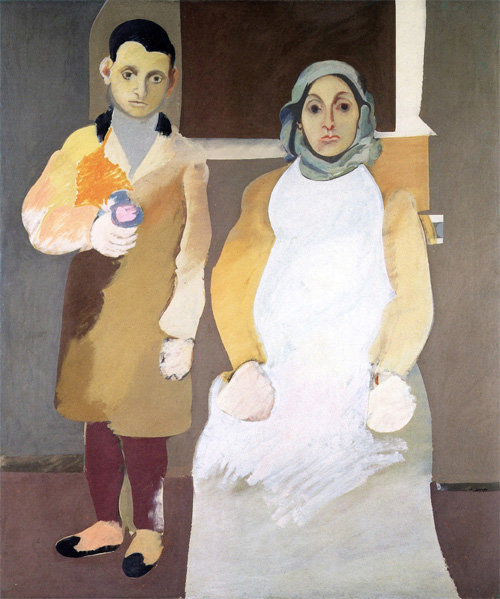Arshile Gorky's ‘The Artist and His Mother’
Arshile Gorky's ‘The Artist and His Mother’
Posted November. 07, 2019 07:22,
Updated November. 07, 2019 07:22

Could there be agony larger than the death of one’s mother? Armenian-American painter Arshile Gorky (1904-1948) lost his mother in adolescent years. He was able to mourn for his mother only after he became an artist putting behind his childhood of poverty and hardship. In “The Artist and His Mother,” he portrays an image of himself at childhood with his mother, but he looks depressed. What had happened to his family?
Though better known as the leader of American abstract expressionism in the 20th century, Gorky is of Armenian descent. The tragedy his family experienced in his hometown had a significant impact on his life and artwork. When he was four years old, his father fled to the United States in 1910 to avoid conscription. When Turkey invaded the country five years later, his family was fortunate to have survived, but he lost his mother to famine in 1919. She was one of the 1.5 million victims of the Armenian Genocide. Gorky moved to the United States in the following year and built his career as an artist while he worked and studied.
“The Artist and His Mother” was completed in 16 years after the artist started creating. Gorky began this painting when he was 22 and finished it 16 years later. It was based on a family portrait taken in his hometown when he was 8 years old. Gorky, who wears a coat, stands next to his mother who sits with a determined expression. In the actual photograph, his mother is wearing a flowered apron, but the artist portrays his mother wearing a white one in the painting, which was left uncolored. “My mother told me many stories whenever I buried my face in her apron with my eyes closed,” recalls Gorky. Aprons are the objects that bring back memories of his mother, which fade away with the passage of time. That was why he did not finish coloring the apron.
The artist even omitted the hands of his mother as well. Hands are one of the post important parts in our body as they give blessing, replace words, connect and protect us. No hands mean the absence of care and severance. Perhaps the absence of his mother was so large in his heart that the painter was not able to finish the painting after working on it for 16 years.






